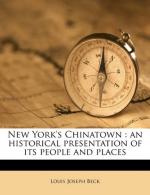|
This section contains 2,446 words (approx. 9 pages at 300 words per page) |

|
Tang Palace Music. The Tang dynasty (618-907) established two music-management systems, one controlled by the court and the other by the government. The Taichangsi (Temple of Ultimate Normalcy) was the governmental institution in charge of ritual and music. The court had the Jiaofang (Training Center) for teaching court musicians and the Liyuan (Pear Garden) for palace musicians. Tang music falls into three basic genres: the gequ (song melody), the wuqu (dance melody), and the jiequ (instrumental melody). It is also grouped in four different styles: yanyue (palace-feast music), duobuyue (multinational music), daqu (grand melody), and faqu (Buddhist melody). Broadly speaking, Tang palace music included Chinese, foreign, and minority music of the Sui (589-618) and the Tang dynasties. Narrowly speaking, it included only the categories of music known as the "ten melodies." In fact, during the early Tang era there were only "nine melodies" inherited from...
|
This section contains 2,446 words (approx. 9 pages at 300 words per page) |

|




